On May 1st, 1971, the National Railroad Passenger Corporation, or Amtrak, was formed. On this 52nd anniversary, I thought we should take a look at small Amtrak trains from the start. If you want to learn about how to model modern short Amtrak consists, check out my previous article. Instead of focusing on two individual trains, today I want to look at trains in two particular regions, the Midwest and Appalachia.
Early Amtrak trains consisted of non-uniform cars. It was the “rainbow era” with locomotives and rolling stock from the many railroads that had their passenger operations taken over by Amtrak. This era is perfect for modelers who have a lot of passenger equipment from different railroads, or different kinds of Amtrak cars from the early years.
Midwest
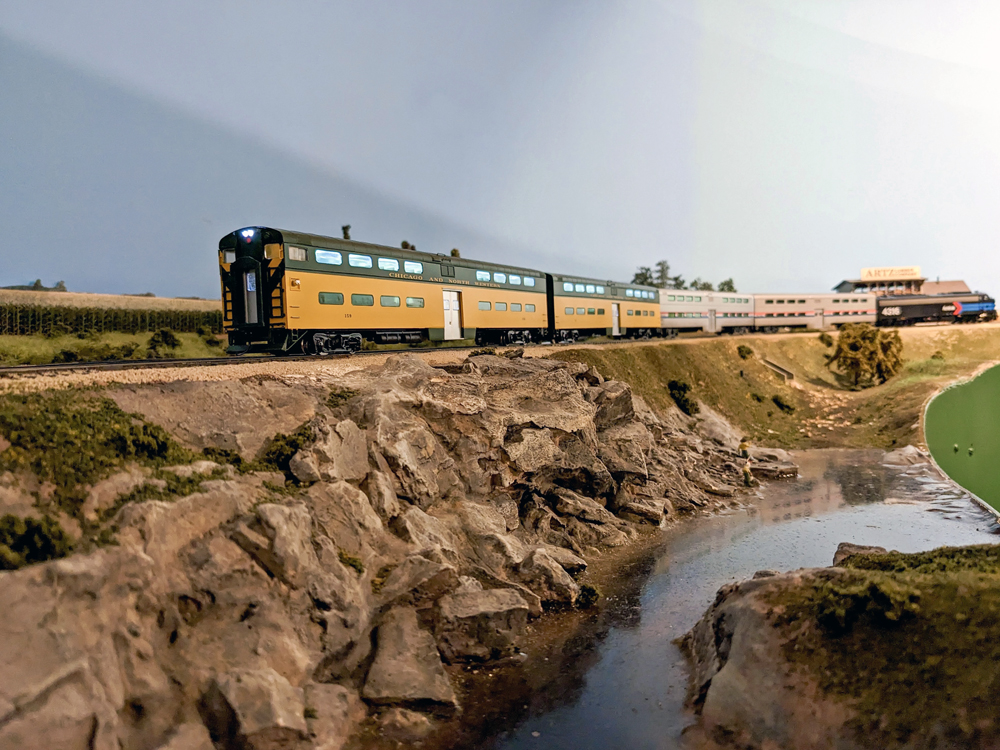
Amtrak’s routes in the Midwest were quite interesting in the 1970s. While many long-distance trains arrived and departed from Chicago, several regional trains called the region home too.
One of my favorite pieces of Amtrak equipment from the 1970s is the bi-level coach. No, not Superliners or Hi-level, but bi-level coaches. Amtrak purchased these bi-levels from the Chicago & North Western for use on regional trains. One such train was the Illinois Zephyr between Chicago and West Quincy, Mo. While the train now terminates in Quincy, Ill., it still operates today. At the time, it operated with three to four bi-level coaches. Some pictures I saw even show it running with some cars still wearing their C&NW paint, so that’s how I decided to model this train. I used the Rapido Amtrak Day One E8A No. 4316, two Walthers C&NW bi-level coaches, and two Kato Amtrak bi-level coaches.
Amtrak’s State House took passengers between St. Louis and Chicago beginning in October of 1973. In 2006 it was re-branded as a Lincoln Service train. A typical State House train was led by an E8A, followed by an 85’ Budd baggage-lounge, 85’ Budd diner, and two 85’ Budd coaches.
Chicago and Rockford
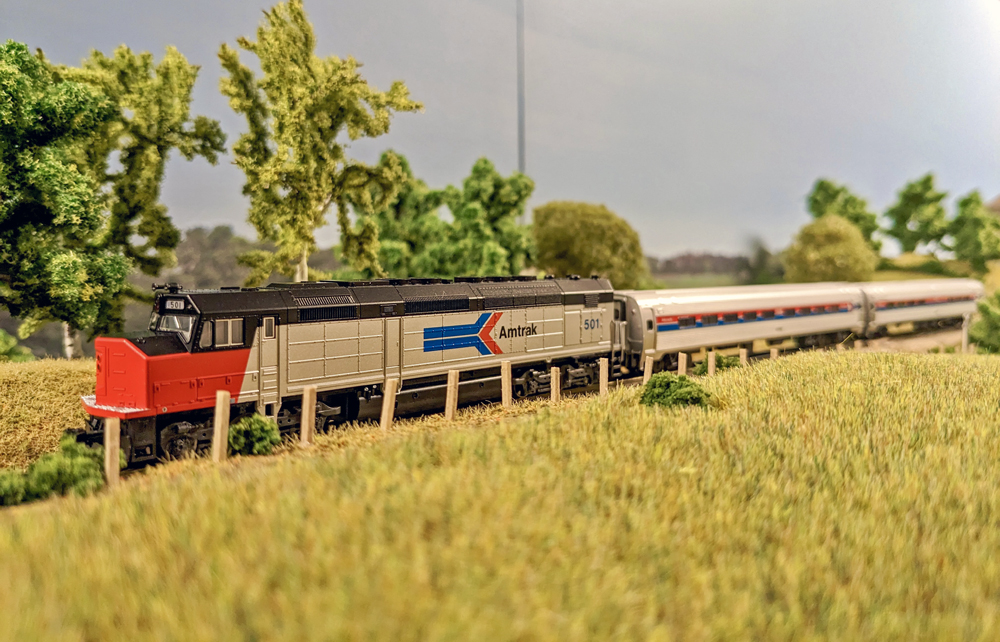
Another interesting regional Amtrak train that normally operated with just two cars, Amtrak’s Black Hawk carried passengers between Chicago and Rockford, Ill. from 1974 to 1981. The railroad began operating the train with Budd Rail Diesel Cars and replaced them with conventional diesel locomotives and passenger cars in 1976. Equipment varied between the bi-level coaches mentioned above, dome cars, observation cars, full diners, Hi-level coaches, and Amfleets. Power also varied between P30CHs, SDP40Fs, and F40PHs. To model this train, I used the Kato N scale Electro-Motive Division SDP40F and two of its Amfleet I cars, a coach and a café.
Appalachia
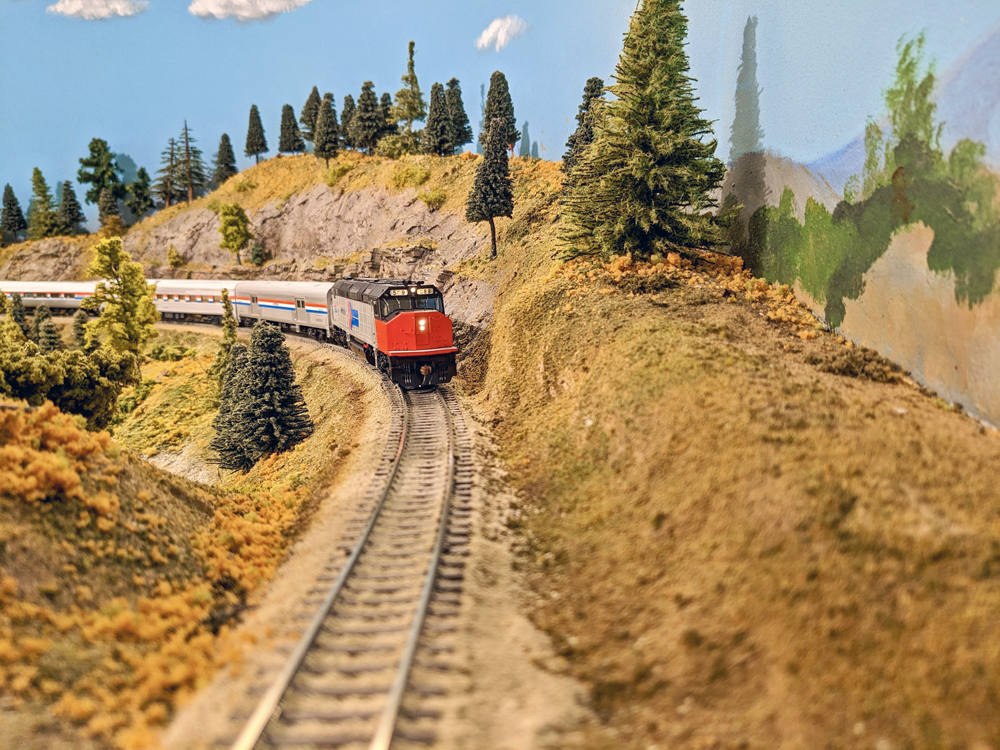
Before we get deep into the mountains, let’s discuss a train that takes passengers from the Midwest into Appalachia, the Cardinal. The Cardinal is a current Amtrak train that began operations in 1977, replacing the James Whitcomb Riley between Washington, D.C., and Chicago. While today’s Cardinal can be around eight cars in length, it wasn’t always that way. The early Cardinal could be seen with just a single locomotive, usually a P30CH, a baggage car, Amfleet café, and two Amfleet coaches. Sometimes a Slumbercoach was added. To model the Cardinal, I used an Athearn SDP40F, 73’ Budd baggage car, Amfleet I café, and two Amfleet I coaches.
Cincinnati, Ohio, and Washington D.C.
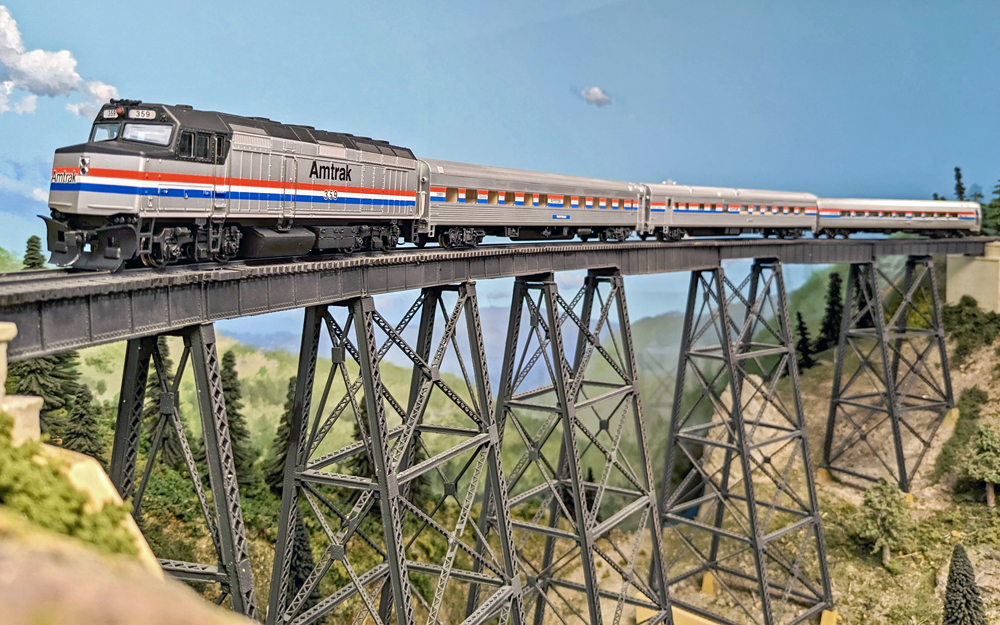
A train that connected Cincinnati, Ohio, and Washington D.C., but didn’t take the same route as the Cardinal was the Shenandoah. It took the route of the Capital Limited between Washington, D.C., and Cumberland, Md., and then over toward Cincinnati through West Virginia and southern Ohio. The Shenandoah operated between 1976 and 1981. A typical consist for the Shenandoah was an Electro-Motive Division F40PH, Heritage sleeper, Amfleet I café, and Amfleet I coach.
Washington, D.C., and Cumberland, Md.
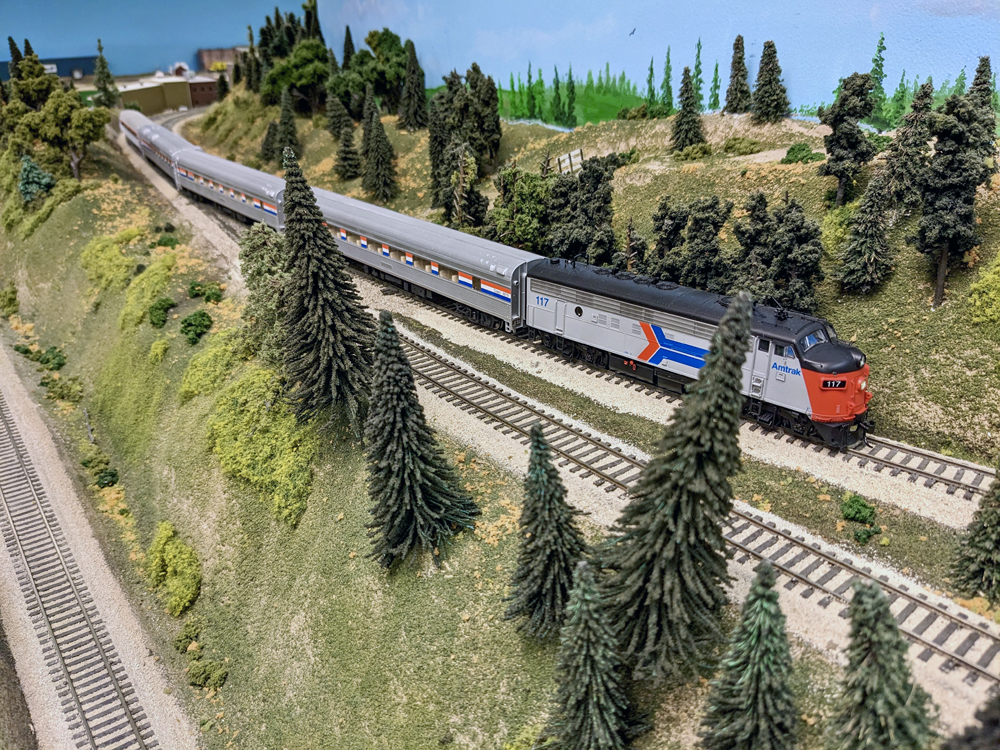
Another train that graced the Appalachian Mountains in the 1970s was the Blue Ridge. This regional train operated between Washington, D.C., and Cumberland, Md., from 1973 to 1986. After the introduction of the Shenandoah, it was truncated to Martinsburg, W.Va. As a regional commuter train, it only traversed 143 miles, and usually had a locomotive, two coaches, diner, and another coach. In 1986 it was transferred to the Maryland Mass Transit Administration which now operates it as the MARC Brunswick Line. For this odd regional commuter train, I used a Walthers Amtrak FP7, two 85’ Budd coaches, an 85’ Budd diner, and 85’ Budd coach. When they are released, it would be fun to run this train with one of the Rapido New Haven Pullman-Standard Country Cars in the rear.
Do you want to run a short train that looks different from all the other Amtrak trains out there? Amtrak operated two types of trainsets, the Rohr Turboliner built between 1976 and 1977, and the United Aircraft TurboTrain, which the railroad inherited. Both of these trainsets were used all over the country, even on many of the routes described above. All of the routes listed typically operated with five units (including a locomotive) or less. That is the same number of units that were paired together to form these trainsets. Rapido is offering both the Turboliner and the TurboTrain for pre-order in HO scale. The Turboliner is also available for pre-order in N scale. Don’t speed off too fast, stay tuned to learn about some short trains that Amtrak operated in the 80s!








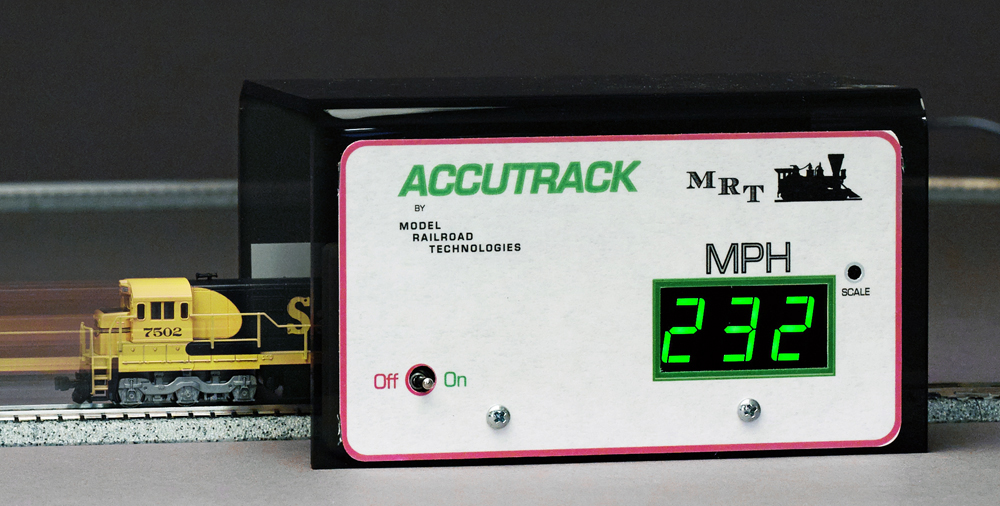
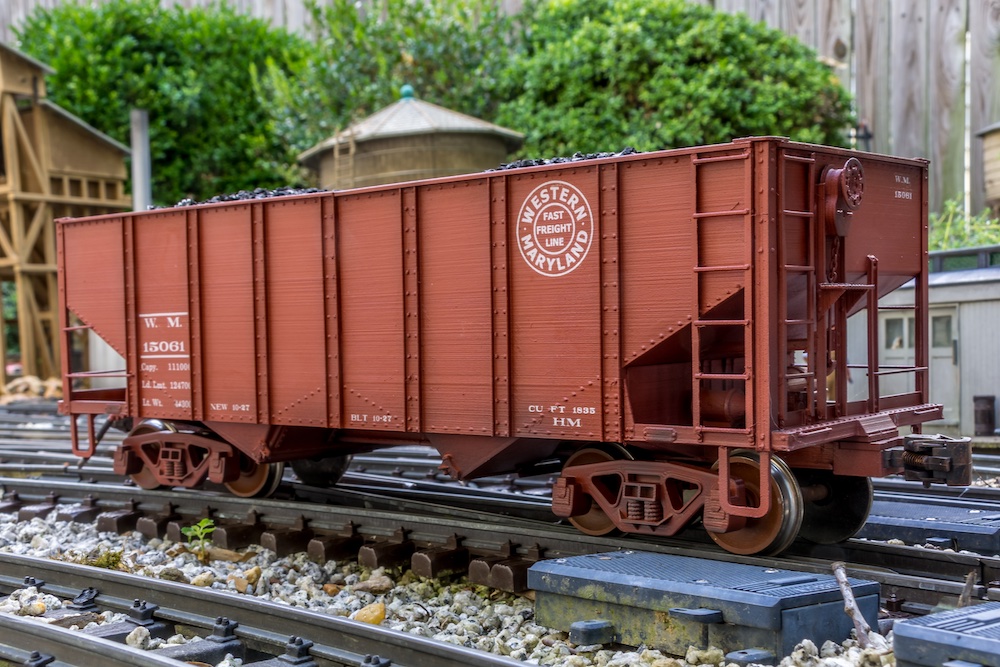




The bi-levels also ran on the Illini. In the early 90s they reappeared on a train called the Loop which ran between Chicago and St. Louis.